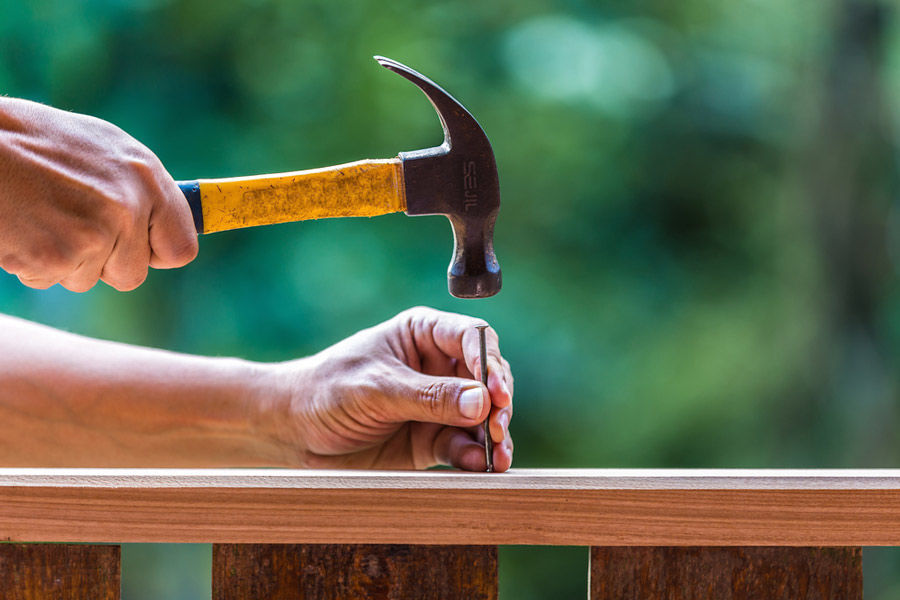Good balance results in less stress on muscles and tendons, helping to eliminate common injuries associated with swinging a hammer.
The most important procedure in the manufacture of a hammer is controlling the temper or degree of hardness of the head. First, you need to start with the right steel; high carbon steel. You then need to achieve the correct hardening by a process called heat treating.
The depth of the hardening on the striking face is also an important factor. Many times, since you cannot see hardness, it is neglected, which affects the hammers durability and makes it a potentially dangerous tool. If it’s too hard it becomes brittle and chips easily. The eye of the hammer needs to be strong rather than hard, so the eye should be softer.
According to the professionals, the hammers with a hickory handle are best, next are the fiberglass, and then solid steel hammers when it comes to tiring and painful handle vibration.
It’s very important to ensure that the head-handle assembly remain secure. In a professional, top quality hammer, the head and handle should be assembled with a wooden wedge and steel wedges.
What to look for in a good quality hammer
Claws
are designed to easily slip under nail heads, but some manufacturers have gone the extra mile, and made a double bevel on hammer claws. The forged bevel provides clearance to allow claws to slip easily under nail heads close to the wood surface. The secondary bevel firmly grips nails of all sizes.
Bevel
The bevel on the striking face of the hammer will reduce the chance of chipping the face with off center strikes, making the hammer safer to use.
Crown
A properly crowned striking face drives nails flush without marring the wood surface. The crown acts to “automatically” correct off-center strikes, minimizing nail deflection and bending.
Grip
Of course, the first thing most of us try out on a new hammer is the grip. We need to find one comfortable for us, but also one that is safe and professionally designed.
When looking at a wood handle, first make sure it is made of the finest, strongest wood; hickory. This type of handle should have a bell end to provide a secure grip during hard blows. The larger mid-section of the handle gives a good grip for light blows.
Fiberglass & Tubular Steel hammers should feature a non-slip, cushioned PVC grip molded to the handle.
When looking at the solid steel handle, make sure it features an air cushion grip for comfort and shock absorption.





